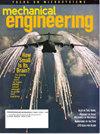旧船换新帆
IF 2.1
4区 工程技术
Q2 ENGINEERING, MECHANICAL
引用次数: 2
摘要
全球10万艘货船产生的碳排放量与德国相当。减少这些排放(并削减燃料成本)的方法之一是借鉴过去的技术,利用风力发电。通过利用先进的模拟工具,工程师们已经开发出了有前途的节油技术,这些技术不一定像过去的高桅船。这篇文章展示了欧洲是如何引领潮流的。本文章由计算机程序翻译,如有差异,请以英文原文为准。
New Sails for Old Ships
The world’s 100,000 cargo ships produce about as much carbon emissions as Germany. One of the ways to reduce those emissions (and slash fuel costs) is to borrow a technology from the past and harness wind power. By harnessing advanced simulation tools, engineers have developed promising fuel-saving technologies that do not necessarily resemble the tall masted ships of the past. This article shows how Europe is leading the way.
求助全文
通过发布文献求助,成功后即可免费获取论文全文。
去求助
来源期刊

Mechanical Engineering
工程技术-工程:机械
CiteScore
0.60
自引率
0.00%
发文量
21
审稿时长
6-12 weeks
期刊介绍:
Information not localized
 求助内容:
求助内容: 应助结果提醒方式:
应助结果提醒方式:


